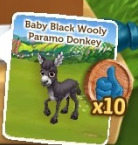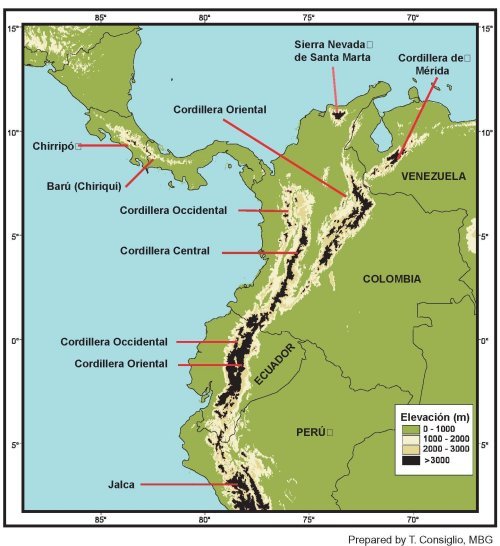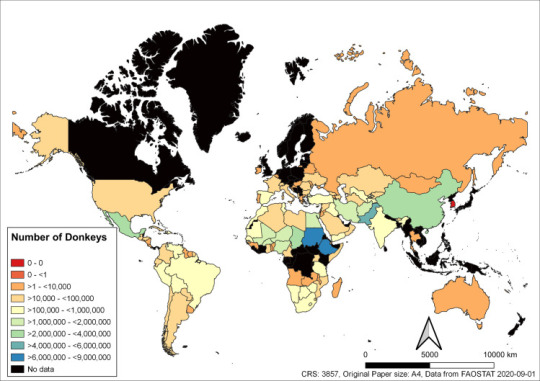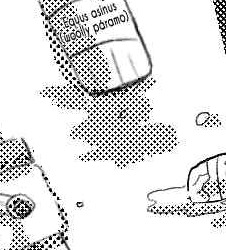#Paramo Ecosystem
Explore tagged Tumblr posts
Text










Valeriano's Manor sits upon a floating island about 3300 meters above sea level in a páramo ecosystem. The manor itself incorporates various Gothic turrets and arches and is surrounded by 25 acres of private moorland. It is home to many owls, rabbits, white-tailed deer, coati, frailejones, mosses, shrubs, hummingbirds, and high-altitude foxes. For more on páramo ecosystems, click here.
TAG LIST: (ask to be + or - ) @the-finch-address @achilleanmafia @fearofahumanplanet @winterninja-fr @avrablake @outpost51 @d3mon-ology @hippiewrites @threeking @lexiklecksi @ashirisu @thelaughingstag @foyle-writes-things @inkovert
*Disclaimer: none of the above images are mine.
#Valeriano's Manor#Paramo Ecosystem#writeblr#writeblr community#writers on tumblr#writers of tumblr#writblr#original fiction#writing community#fantasy#dark academia#tropical academia#dark academia moodboard#dark academia aesthetic#dark academia aes#dark academia vibes#dark acadamia aesthetic#chaotic academia#academia aesthetic
18 notes
·
View notes
Text
today is world donkey day apparently, so I was going to draw a lil doodle of mira with her donkey right. so I go 2 google it (have not googled her specific donkey type, the woolly páramo donkey, since I made her possibly, in like, ..2014?? usually I just type in baby donkey for refs, lmao)
and ive gone down a rabbit hole.
bear with me.
this is going to be a Long One.
there's almost NOTHING abt the 'woolly paramo donkey' on the internet. there's a blogsite from 2011 saying "Another endangered species of donkey is the Woolly Paramo Donkey. It can be found in high elevations of up to 3,000 m altitude and the permanent snow line of about 5,000 meters. It can be found in Colombia." which, I assume in 2014, when making Mira, I googled 'endangered donkeys' and this popped up. And I did not look further. until now.
if you google that passage, or anything related to páramo woollies, they just. don't seem to EXIST???! there's one page that copy and pastes the above paragraph word for word, but it was published in 2015, so. it also just scrubbed info from the aforementioned blog that seems to be run by a rando with no...sources or expertise at all....fabulous. okay. kept digging.
this page cites the pictured donkey as a woolly páramo donkey, except, that is in Ireland. not anywhere near páramo! (and sure, exporting animals is a Thing, but...the caption says its a subspecies of the paramo donkeys???!) (and, for the record, were going with the wiki's definition of paramo here: "A narrower term classifies the páramo according to its regional placement in the northern Andes of South America and adjacent southern Central America.") so we're looking for donkeys around there. more on that later.
but for now, The ENGLISH wikipedia page for Páramo (region) does not include ANYTHING about donkeys. which. if it was an endangered species, wouldn't it be notable?? however, the image the first blog uses...IS on wikipedia, and is cited. as being taken in 2007, possibly one of the earliest pics of said donkey type, and was in Chimborazo, Ecuador which iS IN THE PARAMO ECOSYSTEM OKAY WE'RE GETTING SOMEWHERE. RIGHT. THERE'S DONKEYS THERE. I knew that from looking up travel iteraries around Columbia's paramo. what I need to know tho is...ARE THEY A SPECIFIC, ENDANGERED SPECIES/SUBSPECIES/ RARE BREED?! ANYTHING???
The guy who's credited with the photo...unless its a case of the same name (which would be a hell of a coincidence, in this case) has scientific papers out about the paramo region! but...I have to request access to them, and most of them are in spanish, and who knows if they mention donkeys at all or the guy just put pics of them on wikipedia to be nice. like, I know donkeys do live there, but it doesn't seem to be a specific species, more like this is 'a woolly donkey of the paramo region' from the translation of the title of the photo. woolly donkeys can be anywhere!
WELL. the wikipedia photo is used on the ITALIAN WIKIPEDIA PAGE FOR PARAMO. and it lacks info which makes me scream. just calling it a 'woolly paramo donkey' and not elaborating is EVIL is it a reg donkey or NOT
looking into woolly donkeys alone, which I KNOW are a thing, this page cites the miniature woolly variation as rare, saying there are only 400-ish in the US. cool, that's a rare breed, if true. different from being an endangered species, though!!! totally different thing!!! and that linked page is from a breeder with no cited sources, and their last news update was...2019.
the smithsonian estimates miniature donkeys in general to at 10,000-20,000, so 400 of those being woolly seems to be..lowballing the amount of woollies? possibly? seems very low...esp for something with high cuteness appeal that would be a hit at fairs, competitions, or petting zoos. but if true thats at least...a rare breed... which is something...
(there are Poitou donkeys, if nothing else, which are confirmed to be a Thing, woolly, and endangered. quite frankly if I was going to change her to any other donkey, this would be it. its not on the red data list, but it is on the FAO endangered list, which is like. close enough yk?)
back to the paramo donkeys specifically. in my desperation, I asked bing's AI to scrub the web for ANYTHING about them. not that AI is always right, but it is Fast. it said "There is no scientific record of a species known as the “Woolly Paramo Donkey” living in high altitudes or near permanent snow." which...yeah. starting to Doubt it's existence. by this point.
just when I thought 'this thang isn't real, oh god I might have to pick a new donkey for Mira.....' I Found it somewhere unexpected.
a blog post about farmville 2. yeah the old facebook game! why is it here???! the game came out in 2012, so it had to be pulling the name from an earlier source, and was not where the blogs were getting their info (and thank god for that) but...even looking into reputable sources for THAT is hard to find??! its not on the farmville 2 wiki (LMAO) there's other species of donkey on the game, but none matching these low res pics that pop up on random cheatcode blogs when I look for possible sources?


both of these images/img descriptions call it the woolly paramo donkey. and seem to be reasonably well rendered, and can be found across a few other farmville 2 blogs/guides... (the first img being a baby, the scond being adult vers) I can't really imagine boomers who play farmville going to the effort to photoshop fake upgrades in 2012 for farmville 2... but its not on the fan wiki, which usually cite their sources. I am not playing farmville 2 to investigate this further, but its WEIRD!!! esp since farmville does have woolly donkeys, and the above are NOT just colorovers of them! where...where was farmville drawing the "woolly paramo donkey" name from.
anyway, enough about farmville it really isnt THAT important but it blows my mind the name woolly paramo donkey slipped into there somehow. how. who. & its supposedly in a game called 'island paradise' but I couldn't find pictures of it. but its got its own wiki fan page as well...??
so, anyway, back to the actual research, here's a map of where the paramo ecosystem is. and a map from 2018 on a reputable government website regarding donkey populations. (most recent study I could find, unfortunately!) there could very well be an endangered or at least rare subspecies/breed of donkey around there! (by the way, there ARE woolly MONKEYS around the area. surely no one with dyslexia like me read monkeys as donkeys and ran with it right. RIGHT.)


but...there's not one listed under the red data list's website under the name paramo or even any woollies. tbf, the red data website is moreso for wild animals, rather than rare domestic breeds). so I thought hm. okay. time to try something else. I checked for endangered south american donkeys in general. narrowed it down by possible countries. I checked every search engine I have bookmarked, including one that searches for scientific articles/books exclusively. I checked the dang wikipedia list of donkeys. (which, by the way? severely lacking info in general)
NOTHING. THERE IS NO SUCH THING AS THE WOOLLY PARAMO DONKEY BREED, EXCEPT CITED ON THOSE RANDOM BLOGS, AND THAT SINGLE WIKIPEDIA PHOTO. unless...the region it would be in would be spanish-speaking.... there MIGHT be websites on it that I can't even read or find because I'm not using the right terms...OOF. I tried a few words for donkey (burro, burra, burrico,) paired with paramo, and I just kept getting a book result. Pedro Páramo by Juan Rulfo. not related at all, sadly, just includes a donkey in the story and the word paramo in the title.
I guess u could say the woolly paramo donkey was just a mirage? :) (loud booing)
anyway, all of this to say, the breed is most likely not real, or if they are, not documented online. from what I can tell, it seems to just be that woolly donkeys in general are rare, and while they do live in that area, are not proper endangered animals/species if we want to get hung up on semantics. but I'm not changing it for the comic. having her be a (possibly) fake donkey breed is objectively kind of funny, and it was already mentioned in chapter 1!

unless shirogane has decoy DNAs in the event of a break in and that was one of them. oops, all placebo. her mew power comes from, like, the power of belief or whatever. joke joke joke this is not lore its a joke
whatever. I had fun digging for a while! happy world donkey day. petition for a donkey emoji btw ^_^
#this is insane btw i was old enough in 2014 to KNOW HOW TO RESEARCH THINGS I THINK. wait i was 17 whadda hell maybe not actually#my job now includes actually fact checking things so i am good at it now bc ive had literal training for it but this is obvi for fun#<- said thru grit teeth and bloodshot eyes#sanchoyorambles#tm2#......kind of#that donkey drawing isnt going to get done. i spent the morning on this. JKHSFKJSHKJ i am going to prioritize doing my daily may drawing#TwT imagine....a donkey drawing#if i actually have time after work.....i can try 2 squeeze it in....
9 notes
·
View notes
Text
The Philosophy of Ahimsa
Ahimsa—a Sanskrit term meaning nonviolence or non-harming—is a foundational concept in Indian philosophy, especially within Hinduism, Buddhism, and Jainism. But beyond a simple ethical injunction, ahimsa is a profound metaphysical and spiritual principle, offering a way of relating to life, self, and others through reverence, restraint, and compassion.
Core Meaning
At its heart, ahimsa means to do no harm in thought, word, or deed. This doesn’t only refer to physical violence but extends to emotional, psychological, ecological, and even systemic forms of harm. In this sense, ahimsa is both a moral commitment and a spiritual discipline.
Roots in Indian Thought
Jainism: Ahimsa is the supreme virtue (paramo dharma), and Jains take it to rigorous extremes—even avoiding harm to insects or microscopic life. Nonviolence is not just about action but about intent and awareness.
Hinduism: Found in the Upanishads and the Bhagavad Gita, ahimsa is linked with purity, truth, and spiritual liberation. It’s part of the yamas (ethical restraints) in Yoga philosophy.
Buddhism: While the term ahimsa is not central, the spirit of it is present in the First Precept: "Do not kill or harm living beings." Compassion (karuna) and loving-kindness (metta) are central to the path.
Philosophical Dimensions
Ontological Unity: Ahimsa assumes a fundamental interconnection between all beings. To harm another is to harm oneself, because we are not separate.
Karma and Consequence: In Indian thought, harm generates negative karma. Ahimsa is thus essential to the purification of the soul and the attainment of liberation (moksha or nirvana).
Moral Absolutism vs. Contextual Ethics: In Jainism, ahimsa is absolute. In other traditions, it can be interpreted contextually—especially in complex situations like war (as in the Bhagavad Gita).
Ahimsa as Action: It's not just about avoiding harm, but actively cultivating peace, compassion, and justice. It’s a principle of engaged ethics.
Ahimsa in the Modern World
Ahimsa became globally recognized through Mahatma Gandhi, who made it the cornerstone of his philosophy and political strategy. For Gandhi:
"Ahimsa is not the garb of the weak. It is the supreme virtue of the brave."
He redefined ahimsa as Satyagraha—nonviolent resistance grounded in truth and love. This inspired later movements, including the American Civil Rights Movement under Martin Luther King Jr.
Applications Today
Personal Ethics: Choosing kindness, reducing harm in speech, minimizing consumption that causes suffering.
Animal Rights: Ahimsa is a foundation of vegetarianism/veganism in Indian thought.
Environmentalism: Extending non-harm to ecosystems and the planet.
Social Justice: Using nonviolent means to resist oppression and transform society.
Philosophical Questions
Can true nonviolence exist in a world full of conflict and interdependence?
Is ahimsa a passive virtue, or is it a radical form of action?
How do we balance nonviolence with justice, self-defense, or resistance?
Summary
The philosophy of ahimsa is not simply about refraining from violence; it’s about living in deep harmony with life itself. It challenges us to move beyond reaction and domination toward conscious compassion, and to understand that peace is both the path and the goal.
#philosophy#epistemology#knowledge#learning#education#chatgpt#ethics#Ahimsa#Nonviolence#Indian Philosophy#Jainism#Hindu Ethics#Buddhist Ethics#Gandhi#Moral Philosophy#Compassion#Spiritual Practice
0 notes
Note
Adding to this:
C4 grasses dominate the tropics but in higher latitudes the dominant grasses have same type of photosynthesis as almost all other plants (and there are non-grass C4 photosynthesizers too).
grasses are generally dominant wherever trees are suppressed. biggest suppressors are disturbances like fire and herbivory (how grazing mammals feed is different than most dinosaurs) and rainfall too low to support trees. it also helps grasses are wind-pollinated which has great synergy with the above and with the increasing seasonality we see over the Cenozoic. the herbivory aspect is frequtently ignored but shouldn't be imo, studies with white rhinos demonstrated that if rhinos were excluded, grasses decreased
i say generally because there are exceptions and they tend to have traits that put them more in line with how Mesozoic communities were:
Here is a fern field in Hawai'i an area with no native grazing herbivores (but decent disturbance rate due to volcanoes so openings occur anyway) + constant humidity + tropical climate. I've seen parts of South FL like this as well and FL has many Cretaceous floral elements

Prior to grasses, at least before Cenozoic, ferns likely were the dominant plant in disturbed areas. Cycads and other gymnosperms were important back then too but I have yet to find examples of some that took on more grass-like ecological roles
Most ferns during Mesozoic are NOT closely related to the ones we see today. ~80-90% of ferns we see today belong to Polyopsid group which emerged at the earliest 100 mya.
Some of the older fern groups get pretty weird with some even looking grass-like:

Schizae pusilla of New Jersey, Shizaea is part of a very old group of ferns. There are other species e.g. in South Africa and that one I know is more adapted to seasonally dry conditions.
similarly old horesetails being quite dominant:

montane and poor soil ecosystems which naturally exclude megaherbivores tend to be dominated by woody shrubs or non-grass herbaceous plants e.g. Fynbos in Southern Africa, rift scrub in Rwanda, various Australian ridges, moorland and heath in Europe, sagebrush in North America, all the whacky paramo guys so those are good sources of inspiration too even if they lean more on angiosperms

This ask is not about dinosaurs, actually... before the evolution of grasses during the Cenozoic, what could have been the equivalent of grass-like ecosystems (prairies, savanna...) during the Mesozoic?
F E R N PRAIRIES
seriously, there were lots of different kinds of prairies. fern, horsetail, cycad, the list goes on. Basically, different kinds of low-lying plants would do the prairie thing in ecosystems where forests couldn't get a foothold.
but, there were a lot fewer of them than today. because grasses are kind of OP, and have their own photosynthesis system, so they are able to grow and take over many places that would have been forests before grasses took over. That doesn't mean there weren't prairies, but there were just less. and a lot of things were more scrubland than prairie, too.
It's honestly amazing how much grass has changed the ecology of the planet. they are the biggest bioengineers of the cenozoic after people...
#Paleo#that one goose in hawaii might technically count as a grazer idk but it isnt comparable to the actions of hoofstock lol
181 notes
·
View notes
Text
Diving Deeper into the World of Avowed

“For us, creating these selections, like the large ones that have an effect on the result of a quest, or the wellbeing of sure characters or communities are simply as essential because the smaller selections that you simply make in navigating a dialogue and, in refined methods, influencing your relationship with one other character,” stated Patel. “All of it's actually centered round letting the participant be the primary character on this setting.” It’s essential to notice that for all we’ve now seen of Avowed, there’s a lot, far more to discover all through the Residing Lands. In truth, the particular quest in Shatterscarp we lined “is solely discoverable, which implies it’s additionally solely missable.” When it comes to scope of the sport, Paramo compares with one other latest Obsidian title, “it’s open-zone, measurement corresponding to The Outer Worlds areas on the bigger aspect, and a number of paths primarily to deal with fight conditions, or keep away from them.” In keeping with Patel, sharp-eyed gamers may have far more to hunt out all through their time with Avowed: “One of many large delights of being a developer on a recreation like that is creating a lot for gamers to seek out, and realizing that not all people’s going to hunt it out, and never all people’s gonna discover it, however realizing that the gamers who do are actually going to benefit from the secrets and techniques they uncover.” Avowed launches this fall on Recreation Go, Xbox Sequence X|S, and Home windows PC – for extra info please go to the Avowed website.


Avowed
Xbox Recreation Studios ☆☆☆☆☆ ★★★★★ Welcome to the Residing Lands, a mysterious island full of journey and hazard. Set within the fictional world of Eora that was first launched to gamers within the Pillars of Eternity franchise, Avowed is a first-person fantasy motion RPG from the award-winning crew at Obsidian Leisure. You're the envoy of Aedyr, a distant land, despatched to research rumors of a spreading plague all through the Residing Lands – an island stuffed with mysteries and secrets and techniques, hazard and journey, and selections and penalties, and untamed wilderness. You uncover a private connection to the Residing Lands and an historic secret that threatens to destroy every thing. Are you able to save this unknown frontier and your soul from the forces threatening to tear them asunder? The Bizarre and Fantastic Residing Lands The Residing Lands is a spot that feels international but considerably intrinsic to you because it feels the island itself is asking out to you for assist. Discover an island residence to many various environments and landscapes, every with their very own distinctive ecosystem. Visceral Fight to Play Your Approach Combine and match swords, spells, weapons, and shields to struggle your approach. Dig into your grimoire for spells to lure, freeze or burn enemies, bash them along with your defend, or use vary bows to assault from a distance. Companions as a part of your journey Companions from a selection of species will struggle alongside you, with their very own distinctive set of talents. From a former mercenary to an eccentric wizard, they are going to be a part of your journey along with your selections shaping them as you assist them with their quests. Read the full article
0 notes
Text
Hummingbird Species, Part 174
Today we take a look at the bronzy inca, Coeligena coeligena. Introduction The bronzy inca hummingbird (Coeligena coeligena) is a captivating bird species native to the high-altitude cloud forests and paramo ecosystems of the Andes mountains in South America. With its striking plumage, remarkable behavior, and important ecological role, the bronzy inca hummingbird is a subject of great interest…

View On WordPress
#bronzy inca#bronzy inca hummingbird#Coeligena coeligena#hummingbird nectar concentrate#hummingbird nectar recipe mix#Hummingbirds#hummingbirds of Central America#hummingbirds of South America
0 notes
Text
Day 30 8.6.23
Marthin picks me up around 10 ish in an Uber with his friend Paola, we go to Alejandro’s apt because he is another friend of M’s and has a car and will drive us up the mountain to the much anticipated trip to Paramo de oceta —-“which means an ecosystem above the continuous forest line yet below the permanent snow-line”
Every day I look at the mountains outside the windows which make up the eastern facing walls of my airbnb. I want to know what it’s like to be inside of the mountain. Now, on the last full day, I will.
It’s misty and rainy and the ground is incredibly wet and slippery and what starts out as black mud and dirt quickly shifts to brown wet clay, then gray, then yellow. The sound shifts too with the squirts in texture -I think of Alejandra in her studio throwing pots and mugs and also the famous brick library built in the shape of a snail—Biblioteca Pública Virgilio Barco—I visited the day before, same architect as Marthin's apt. A mountain and city made of clay.
The environment is otherworldly with the thick mist and filled with lichen and Espeletia, or Frailejon plants which is a type of perennial subshrubs (reminds me of a large pineapple) they are often called “big monks” because they form in clusters and the silhouettes look like cloaked friers on their way to mass—I am very intrigued by this reference because it plays into my interest in natural history and human’s eco-centrism, desire to domesticate the natural world.
The plants have hairy leaves which help them trap water and the center is hollow–to hold all the water. They take forever to grow. They have beautiful yellow flowers. There are also these spiky silver looking succulent like plants that grow from the center outward as well as lots of tiny little purple and red flowers and orange barked wire like trees.
The whole hike is supposed to take about 2 hours, we take about 4 because there is an incredible waterfall to swim in (I hold back because I am already cold and know getting completely wet will put me over the edge) and also because we are taking our time, and taking pictures and there is so much clay and mud so we have to be careful with our footing. After we finish we sit in the pick-nick area and we eat bone broth soup and arepas and sugarcane tea with cheese. We drive back to P’s house for a coffee and then home. A full day.
1 note
·
View note
Text
Design students in Colombia have harnessed the porousness of moss to design a water filter that can trap microplastics.
Over the two-month product life of the filter, it can trap 80 grams of microplastics, sparing the drinker’s biology from consuming the equivalent of 16 credit cards.
The design comes from the remarkable ecosystem high in the Andes Mountains called the Paramo. Hiking in this mountainous region is done either on rock, or what feels like marshmallows. The biosphere is covered in layers of moss species which absorb, filter the water, and send it down mountain streams where it’s scientifically found to be good to drink for around 40 million people across northern South America.
3 notes
·
View notes
Photo

Buffy Helmetcrest (Oxypogon stuebelii), a hummingbird endemic to the paramo ecosystem of the central Andes of Colombia
photograph by Juan Jose Arango | Flickr CC
104 notes
·
View notes
Text
Sumapaz: Between Life and Death
Sumapaz: Between Life and Death
In my opinion, the Paramo is the most representative ecosystem of Colombia. For many years, it was a place of violence in Colombia. Nowadays, other issues, such as extensive cattle farming and deforestation have endangered the Paramo. But what is a Paramo? Well, I will not use a biogeographic term to describe the Paramo, because this could be extensive. However, I can say that one of its…

View On WordPress
3 notes
·
View notes
Text
2 notes
·
View notes
Link

Excerpt from this story from The Revelator:
An ecosystem unique to the Andes, the páramo moorlands are located mainly in Ecuador and Colombia, along with areas of Peru and Venezuela. This discontinuous belt of land covers roughly 36,000 square kilometers and represents a kind of high-altitude island archipelago. Found between 3,200 and 4,500 meters above sea level, these tropical alpine wetlands occupy a zone that typically lies above the agricultural frontier and upper tree line, reaching up to border areas of perennial snow.
They’re also uniquely at risk in ways that threaten millions of people, if not the entire climate.
Efforts to protect the páramo overlap with Indigenous struggles for recognition and environmental justice. Local leaders know that the future of all these actions depend on one group in particular: young people.
As I first learned a decade ago, preserving the páramo ecosystem and sustaining its role in hydrological cycles is vital for ensuring that water continues to flow through the community irrigation pipeline, a project operative since 2009. Such work remains particularly important now, when the páramo faces increasing threats from industrialization and climate change.
I’m frequently told how jóvenes (young people) play a key role in this work.
Reflecting on his experiences in the páramo, earlier this month Jumandy told me, “We need the young people to be well trained,” and repeating the word concientizar, perhaps best translated from Spanish as “to raise awareness.”
Jumandy added, “We need to raise the awareness of young people — and of their parents too — so that everyone understands the importance of the páramo, so that everyone, including young people, plays an active part in these processes.”
2 notes
·
View notes
Text









"Isla" opens today at Kew Gardens Wakehurst (UK). Suspended accross Westwood valley, the sculpture is inspired by Kew's research into a high altitude ecosystem in the Colombian Andes called the paramos. When the sculpture collects rainwater it divides vertically. The lower section of the sculpture is based on direct study of a plant called a freilejon in the Chingaza Range above Bogota, Colombia. 40 feet across with 6000 individually cast parts, the sculpture will be on view through September 2022. More info to follow on future exhibition of the sculpture.
JOHN GRADE
0 notes
Text
Zoo tycoon 2 download snakes

Seminatural grassland occupies areas where moisture is sufficient to support forests. On the periphery of these climatic regions, fire is important in maintaining grasslands by preventing the encroachment of forests in moist regions and desert shrubs in semiarid regions. Tropical grasslands develop in regions with marked wet and dry seasons. Temperate natural grasslands develop in regions characterized by an annual rainfall between 250 and 750 mm (10 and 30 in), a high rate of evaporation, and seasonal and annual droughts. Natural grasslands occupy, or once occupied, large areas of continental landmasses, including the prairies and plains of North America, the pampas and paramos of South America, the veld of South Africa, and the steppes of Eurasia. Grasslands are natural, seminatural, and cultivated. Although temperate grasslands may have more than 50 species of vascular plants, and tropical grasslands more than 200, two or three species of grasses usually dominate upward of 60 percent of the biomass above ground. Grassland is defined as an ecosystem in which grasses, sedges, and other forage plants are the dominant vegetation. East Indian Lemon Grass ( Arabian Nights).Campbell Island Daisy ( Island Excursions).Other plants list Grassland as their biome but instead appear under the Zoo Decorations filter. Squirrel ( Zoo Tycoon 2, Grassland as of Marine Mania).Plain Tiger Butterfly ( Arabian Nights).Citrus Swallowtail Butterfly ( Arabian Nights).Shetland Pony ( Zoo Tycoon 2 Farm Animals booster pack)Īmbient Animals (four official + four user-made).Sheep ( Zoo Tycoon 2 Farm Animals booster pack).Przewalski's Wild Horse ( Endangered Species).Dwarf Sicilian Elephant ( Extinct Animals).Columbian Mammoth ( Extinct Animals booster pack).Clydesdale Horse (Colonel Swampert and Mjmannella download).Black-tailed Prairie Dog ( North America Pack).Aldabra Giant Tortoise ( Grassland Pack).4 Plants (six official + six user-made)Įxhibit Animals (eight official + 17 user-made).3 Trees (three official + eight user-made).2 Ambient Animals (four official + four user-made).1 Exhibit Animals (eight official + 17 user-made).

0 notes
Photo

Spent a day walking around the city of Bogota checking out its green spaces. 👍🏽 Started at the José Celestino Mutis Botanical Garden, the largest botanical garden in Colombia, ended at Simon Bolivar Park which has a lovely lake in the center and great activity spaces. 🙌🏾 #didyouknow The botanical garden serves as a recreation and research center with an emphasis on Andean and paramo ecosystems. It also has plants from all altitudes, climates and regions of the country. 😲 Bogotá is surrounded by a unique paramo ecosystem. These cold grasslands are found only in a few countries located in South and Central America. 😊 This also plays a role in the country’s great biodiversity as relates to birds, butterflies, and orchids! 😍 #satwbogota #satw #seeyouinbogota #travelerandtourist #bogotacolombia #bogotaart #bogotafoodie #bogotacity #bogotagrafia (at Bogotá, Colombia) https://www.instagram.com/p/CihNd0TuVPu/?igshid=NGJjMDIxMWI=
#didyouknow#satwbogota#satw#seeyouinbogota#travelerandtourist#bogotacolombia#bogotaart#bogotafoodie#bogotacity#bogotagrafia
0 notes
Text
Best National Parks in Colombia For Volcanoes, Glaciers, Scuba Diving and More
— Steph Dyson, Lonely Planet Writer

Colombia’s national parks offer a staggering range of ecosystems, such as the volcanoes and sparse highland paramo at Parque Nacional Natural Puracé © Guillermo Ossa/Shutterstock
A country famed for its exceptional natural wealth, Colombia promises beguiling natural beauty that spans rugged Andean peaks, wildlife-rich tropical rainforests, vast grasslands of wax palms and sparse, highland paramo.
Following two decades of concerted efforts to strengthen its protected areas, the country now has 59 national parks and protected areas, which span a total of 200,000 sq km (77,220 sq miles) – adding up to a whopping one-sixth of Colombia’s land mass. Venturing into one of this country’s national parks offers an escape into remote, pristine and – more often than not – hard-to-access lands. But doing so is always worth the effort.
From encounters with an unsurpassed richness of wildlife to hiking trails offering majestic mountain views, remarkable indigenous stories past and present, and much more, these treasures simply dazzle travelers. Here is our guide to the best national parks in Colombia.

On your visit to Parque Nacional Natural Tayrona, you might spot a critically endangered cotton-top tamarin © Bildagentur Zoonar GmbH / Shutterstock
Parque Nacional Natural Tayrona is the best national park for white-sand beaches
An exquisitely beautiful stretch of white-sand beaches, vast rock formations and untouched rainforest, Tayrona National Natural Park lies in the north of the country, between the skirts of the Sierra Nevada de Santa Marta mountain range and the azure waters of the Caribbean Sea.
Colombia’s most visited park extends across 12,000 hectares (29,650 acres) of land, with a further 3000 hectares (7413 acres) of ocean protected, too. You’ll find access to glorious swimming and snorkeling on a select few beaches; treacherous currents make many others too dangerous for a dip – if beautiful to admire. The obligatory trail from the entrance at Cañaveral into the park traces the coast, dropping by beaches where you can take shade beneath a coconut palm or even catch sight of the critically endangered cotton-top tamarin monkeys that call the adjoining jungle home.
At night, choose a hammock, beachside tent or rustic cabin so close to the ocean that the crashing waves will lull you to sleep. And for maximum tranquility, avoid visiting in December and January when the park is packed with backpackers and pleasure seekers.
See one of the last untouched places on earth at Parque Nacional Natural Serranía del Chiribiquete
One of the last unexplored corners of the planet, Serranía del Chiribiquete National Park is the world’s largest tropical rainforest park and one of Colombia’s most remarkable protected areas, Covering 44,000 sq km (17,000 sq miles), the park was added to Unesco’s World Heritage List in 2018 thanks to its incredible biodiversity (some 3000 animal and plant species reside here) and unique topography in the form of the tepuis, table-top mountains that rise dramatically out of the jungle.
But human history is what makes this place special. Deep within the park lie 75,000 cave paintings dating back to 20,000 BCE, which depict hunting scenes and other ceremonial events. They’re believed to still be used by the five uncontacted tribes who reside within the park’s borders.
Serranía del Chiribiquete National Park first opened to visitors only in 2019, and access is solely by a limited number of 1-hour flyovers run by local tour operators, where you’ll see the park’s dazzling topography and lush jungle from the air.

Active travelers will love hiking through Parque Nacional Natural Los Nevados, one of Colombia’s most dramatic and high-altitude national parks © Antoine Barthelemy / Shutterstock
Parque Nacional Natural Los Nevados offers exciting high-altitude hiking
Dappled with snow-swept volcanic peaks thrusting towards the sky, Parque Nacional Natural Los Nevados is one of Colombia’s most dramatic and high-altitude national parks. Adventurous travelers come here in their droves to tackle the summit of Nevado del Tolima, a 5200m (17,060ft) volcanic crater that requires technical mountaineering experience. For more casual hikers, gentler trails pass up through the sparse yet striking paramo landscapes to reach glassy lagoons and age-old glaciers. You’ll need a registered guide to hike here, which you can organize in nearby Salento.
In the southern skirts of the national park, the more accessible Valle de Cocora is a verdant wonderland of grasslands and cloud forest surrounded by Colombia’s trademark rolling hills dotted with coffee plantations. The main attraction is the Quindío wax palm, Colombia’s national tree, a species that towers up to 60m (196ft). Admire it from the meandering trails that take you to viewpoints from which breathtaking panoramas of the whole Cocora valley and the craggy peaks of the park’s northern reaches await.
Explore the beautifully barren paramo at Parque Nacional Natural Chingaza
Tucked into the eastern Andes within a stone’s throw of Bogotá, Chingaza National Natural Park is a rich source of water, its 60 lagoons providing 80% of the water consumed by the capital city’s residents. It also provides some of the easiest access from the capital to Colombia’s distinctive paramo. This barren yet beautiful tundra-like ecosystem sits between the tree line and snow line, and is dotted with curious-looking frailejón plants.
No public transport operates here, so exploring this 76,600-hectare (189,300-acre) park requires the assistance of a Bogotá-based tour operator or your own vehicle. Five hiking trails, each with visitor caps at either 40 or 60 per day, allow you to explore the park, with the most popular being the challenging climb to reach the otherworldly Lagunas de Siecha.
Altitudes hit 4000m (13,120ft) above sea level within the park, so give yourself a couple of days to acclimate in Bogotá before venturing out here.
Summit an active volcano at Parque Nacional Natural Puracé
In the far south of Colombia and protecting a slice of the Andes, Parque Nacional Natural Puracé packs volcanoes, dazzling waterfalls, soaring condors and sparse highland paramo within its boundaries.
Like most of Colombia’s national parks, the best way to experience the remote but beautiful natural landscapes here is on foot. The best route is the hike to the edge of the crater of the 4650m (15,255ft) Volcán Puracé, the only active volcano in Colombia with a summit that’s safe to reach. Keep your eyes on the skies for the unmissable vast wingspan of the Andean condors, a species introduced to the park in 2002.
Visit Puracé during September and October to see the frailejón plants that dominate the paramo produce dazzling, sunflower-like blooms.
Take in shrinking glaciers (while you still can) at Parque Nacional Natural El Cocuy
Remote and untouched, Parque Nacional Natural El Cocuy is a challenging place to reach. Yet the effort of a 10-hour rattling bus journey northeast from Bogotá pays big dividends, granting access to a 3060 sq km (1180 sq mile) park that’s home to 15 magnificent 5000m-plus peaks, electric-blue lakes and the largest expanse of glaciers in the country, which are narrowly clinging on despite the onward march of climate change.
While many hiking trails have been closed because of objections from the resident U’wa people about visitors crossing their sacred lands, the park still has plenty to offer. Trekking highlights include the 12-hour trail to El Pulpito del Diablo, a shard of rock spiking out of a slowly retreating glacier, beyond which alpine tundra, glacial valleys and vertiginous mountains roll into the distance.

Every year, the Caño Cristales bursts into a bloom of pink and red thanks to the Macarenia clavigera plant within its depths © sunsinger / Shutterstock
Swim in magenta-hued rivers at Parque Nacional Serranía de La Macarena
Parque Nacional Natural Serranía de La Macarena is where you’ll find one of Colombia’s most curious natural attractions. Each year within the tropical reaches of this park, a river blooms magenta.
Better known as Caño Cristales or the Liquid Rainbow, this river bursts into a bloom of pink and red between July and October thanks to the Macarenia clavigera plant within its depths – and you can swim the water to get a closer look. As part of a guided tour, you can access a trail of waterfalls and swimming holes dotted around the south of the national park, all of which are within easy reach of the town of La Macarena.
Visitor numbers are capped at 200 per day, but this figure is rarely enforced; a mid-week trip will see many fewer visitors than on weekends.
Enjoy snorkeling and scuba diving galore at Parque Nacional Old Providence McBean Lagoon
Measuring in at just 1485 hectares (3670 acres), Parque Nacional Old Providence McBean Lagoon is one of Colombia’s smallest national parks. It covers the mangrove forests in the east of Colombia’s Caribbean island, Providencia, as well as the surrounding waters, which protect part of the third-longest coral reef in the world.
Within the park is Cayo Cangrejo, a magical, picture-perfect island nearby whose waters lay claim to some of the most remarkable snorkeling and diving in the region. Beneath the bathtub-warm and crystal-clear waters, you’ll spot coral reefs inhabited by schools of tropical fish. Keep your eyes peeled for four species of turtles and manta ray, too.

It takes days of trekking through the jungle to reach Ciudad Perdida (Lost City) in Colombia’s Parque Nacional Natural Sierra Nevada de Santa Marta © Jess Kraft / 500px
Visit Parque Nacional Natural Sierra Nevada de Santa Marta for intriguing archeological sites
The birthplace of the Tairona people, Parque Nacional Natural Sierra Nevada de Santa Marta is best known as the home of Ciudad Perdida, the once-thriving Tairona city that remains buried deep in the jungle. This national park is a place of stark contrasts, where the soaring summits of the Sierra Nevada de Santa Marta mountain range slide into deep river valleys and practically impenetrable jungle.
Descendants of the Tairona still inhabit this national park – and consider these mountains sacred – and you may well bump into them as part of the 5-day trek that slogs through the rainforest to reach the intriguing archeological site. Conditions are hot, humid and muddy; visit between December and February for dry ground underfoot.
0 notes